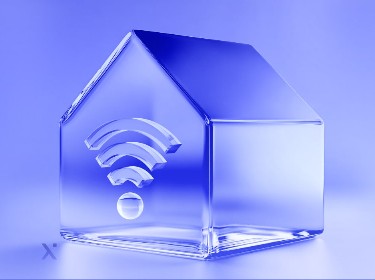Empowering patients and providers alike, telemedicine applications can extend far beyond mere real-time video consultations. They now incorporate features like AI-driven diagnostics, health tracking, and personalized treatment plans. But what else do they have to offer?
The telemedicine market worldwide is set to surge from $94.44 billion in 2023 to $286.22 billion by 2030, marking a CAGR of 17.2% throughout the 2023-2030 period. It’s noteworthy that North America has established itself as the dominant force in the global landscape, with a 47.87% market share in 2022.
As the industry grows, so does the demand for innovative telemedicine apps. Healthcare organizations can choose to create virtual consultation platforms, remote patient monitoring systems, diagnostic tools, and other kinds of applications.
Plus, incorporating a medical scheduling platform is essential for streamlining appointment bookings and enhancing patient access to services. This is exactly what Doctime by PixelPlex does. The platform features an integrated marketplace allowing medical centers to list appointment info, while patients can book appointments with specialists and enjoy exclusive discounts.
Let’s delve into this and other types of applications, their key features, the benefits of telemedicine app development, and the essential steps for successfully launching your own platform.
What is a telemedicine app?
A telemedicine app is a digital platform that enables patients to receive medical care remotely. It leverages the power of modern technology to bridge the gap between healthcare professionals and patients.
These apps facilitate a range of services, including virtual consultations, prescription management, and monitoring of health conditions, all through a smartphone, tablet, or computer.
By using video calls, messaging, and digital monitoring tools, telemedicine apps allow for timely medical advice, diagnosis, and treatment without the need for physical presence in a healthcare facility.
Find out more about telemedicine technology, its benefits, limitations, and possible applications
Why do you need a telemedicine app? Major benefits
Telemedicine mobile app development services offer numerous advantages to all parties involved — patients, doctors, and healthcare businesses.
Let’s explore the benefits this innovation provides to each of these stakeholders.
Benefits for patients:
| Benefit | Explanation |
| Improved accessibility | Telemedicine apps improve healthcare access for remote, underserved communities, and those unable to visit clinics due to health reasons |
| Reduced healthcare costs | Telemedicine can lower healthcare costs by minimizing the need for physical visits and eliminating travel expenses |
| Increased convenience and comfort | Telemedicine applications facilitate quicker access to healthcare services, allowing for faster care delivery and significantly reducing patient waiting times |
| Minimized exposure to viruses | Telehealth helps patients maintain social distancing during outbreaks, ensuring safe access to medical consultations and care remotely |
| Better health monitoring | Emedicine apps enable continuous monitoring of chronic conditions and allow for timely interventions and the creation of personalized care plans |
Benefits for doctors:
| Benefit | Explanation |
| Enhanced flexibility and efficiency | Telemedicine applications help optimize workflows, offer a flexible schedule, and the ability to see more patients, which can improve work-life balance and reduce burnout |
| Broader patient reach | Doctors can extend their services to a broader audience, including patients in different geographical locations, across regional and international borders |
| Improved patient engagement | Telemedicine facilitates more frequent and direct communication with patients, leading to better management of conditions and adherence to treatments |
| Access to patient data | Telehealth applications provide easy and secure access to patient records and data for more informed decision-making and tailored care plans |
| Continued professional development | Physicians can engage in global consultations, join virtual conferences, and access diverse educational materials and research |
Benefits for healthcare organizations:
| Benefit | Explanation |
| Cost savings and operational efficiency | Telemedicine app development can help reduce overhead costs and optimize resource allocation, leading to more efficient patient management |
| Improved healthcare quality | By making healthcare more accessible and efficient, telemedicine can lead to better overall health outcomes and quality of care |
| Enhanced patient satisfaction | Telehealth improves the patient experience through reduced wait times and increased accessibility, leading to higher satisfaction and retention rates |
| Advantage over competitors | Telemedicine apps offer a competitive edge by providing innovative services that meet evolving patient needs, setting healthcare providers apart in a сompetitive market |
| Faster business growth | Leveraging telemedicine leads to faster business growth as a result of delivering better care and creating more opportunities for patient engagement and satisfaction |
What types of telemedicine apps are there?
![]()
There are numerous types of telemedicine software, each catering to different aspects of healthcare.
In this section, we will explore the main five: apps for general and specialized health consultations, remote monitoring, mental health and counseling, and prescription and medication management applications.
1. General health consultation apps
These applications serve as a digital gateway for patients to consult with general practitioners or family doctors about common health concerns. They are particularly useful for non-urgent medical advice, symptom checking, and initial health consultations.
An example includes Teladoc, which offers 24/7 access to healthcare professionals for a wide range of general health concerns. This platform manages urgent, though not life-threatening, medical issues, such as sinus issues, respiratory infections, allergies, urinary tract infections, and symptoms of cold and flu.
2. Specialized medical consultation apps
These platforms are tailored to connect patients with healthcare professionals in specific fields, such as cardiology, dermatology, or mental health. They cater to patients who require specialized care, consultations for particular health conditions, or are seeking second opinions from experts.
For instance, DermatologistOnCall offers consultations for skin-related concerns. The solution allows patients to receive expert advice without the need for an in-person visit. Such a service enables timely interventions for skin conditions that might otherwise require longer wait times for traditional appointments.
3. Remote monitoring apps
Designed for patients with chronic conditions, these apps help healthcare providers to monitor patients’ health metrics remotely. This technology supports proactive management of diseases like diabetes, heart disease, and asthma by allowing continuous tracking of vital health data.
An app like Glucose Buddy empowers diabetes patients to log their blood glucose levels, diet, and physical activity. This data can later be shared with healthcare providers to inform treatment decisions and adjust care plans as needed.
Meet Patientory — an application designed to manage health data, create personalized medical dashboards, and provide actionable insights
4. Mental health and counseling apps
Offering access to mental health services, these apps provide a confidential platform for individuals who seek support for mental health challenges like depression, anxiety, and stress. The services range from text and voice messaging to video sessions with licensed therapists, facilitating flexible and accessible mental health care.
Talkspace, for example, connects users with licensed therapists for online therapy sessions, making it easier for individuals to access mental health support from the comfort of their homes.
5. Prescription and medication management apps
These telemedicine app developments are designed to enhance medication adherence by helping patients manage their prescription schedules, set reminders for medication intake, and even facilitate the ordering of prescription refills directly through the app.
Medisafe Pill & Med Reminder, for instance, not only reminds patients to take their medication but also provides a robust platform for tracking blood pressure, pain scores, weight, temperature, and other health metrics.
What features does your telemedicine app need to have?
![]()
Typically, in telemedicine app development, core features are included in the MVP, along with additional ones. MVP, short for Minimum Viable Product, is essentially the most basic version of your app that still provides enough value to be usable by early adopters.
The primary goal of creating an MVP is to test, learn, and iterate based on real user feedback without investing heavily in full-scale product development. This will also ensure that the app not only meets the immediate healthcare needs but is also poised for long-term growth and adaptation.
Now, let’s delve into the main features your telemedicine app needs to include in both its MVP and final product. However, remember that depending on the specifics of your services, the application’s features may vary.
Robust security and encryption
All patient and doctor information must be securely stored and transmitted. Advanced encryption methods will protect patients’ sensitive data and medical databases from unauthorized access, breaches, and other cyber threats.
It’s essential not only for maintaining patient trust but also for compliance with healthcare regulations, such as HIPAA in the United States.
Customizable profiles for patients and doctors
Separate profiles and dedicated apps for patients and doctors are essential. This offers a personalized healthcare experience by enabling both user groups to manage medical records and streamline consultations.
For example, a customizable patient profile allows users to set preferences, access personalized health insights, manage appointment schedules, and track health progress over time. By offering a more organized and accessible view of health data and preferences, these profiles facilitate a more targeted and efficient healthcare service.
Private video consultations
Private video consultations are a must-have feature of almost any telemedicine app. They are meticulously designed to mimic the in-person consultation experience as closely as possible, significantly enhancing the accessibility and convenience of healthcare.
To provide the privacy and security of these interactions, all video consultations must be encrypted. This critical measure guarantees that conversations between patients and healthcare providers remain confidential.
Easy appointment scheduling
In-built appointment scheduling is another essential feature of telemedicine app development. It simplifies the process for patients to book and manage appointments with healthcare providers.
This functionality should integrate a user-friendly calendar system that displays available slots in real-time, allowing patients to select times that work best for them without the back-and-forth of traditional scheduling methods. Automated reminders, through pop-up notifications or text messages, can also be sent to both patients and doctors to reduce no-shows.
Here is a comprehensive guide on how to design efficient patient scheduling software, based on our own experience of creating such a platform
Messaging and group chats
These capabilities enable seamless communication within the telemedicine platform between patients and healthcare professionals, as well as facilitate collaborative group discussions among medical teams, patient support groups, and individual consultations.
The feature also implies encrypted messaging to guarantee the privacy and security of information shared.
Seamless EHR integration
This feature integrates the telemedicine app with Electronic Health Records (EHR) to facilitate efficient access to and updating of patient information. This functionality is crucial as it makes sure healthcare providers always have up-to-date patient records at their fingertips during consultations.
This integration substantially improves patient care quality by streamlining workflows, minimizing administrative tasks, and fostering more informed decision-making.
Secure online payment processing
Online payment processing gateway offers a convenient and safe method for patients to pay for healthcare services directly within the app. This feature should support various payment methods and comply with financial security standards to protect transaction data.
Smart device connectivity
Integrating Internet of Things (IoT) technology into telemedicine apps is particularly relevant for chronic disease management and remote patient monitoring applications. It enables real-time transmission of vital signs and health data from monitoring devices to healthcare providers for more accurate assessments and personalized care plans.
Interactive chatbot
Interactive chatbots can provide 24/7 assistance for general inquiries, appointment scheduling, and health tips, significantly improving user engagement.
Powered by artificial intelligence technology, the chatbot can answer common questions, guide users through the app, and even triage symptoms to suggest appropriate actions, enhancing accessibility and efficiency in healthcare delivery.
Check out our AI chatbot development services that can help your business automate repetitive tasks and enhance user engagement
Broad device compatibility
Device compatibility is vital given the diverse range of devices in use today. With this feature enabled, the telemedicine app can seamlessly operate across smartphones, tablets, and computers, on both iOS and Android platforms.
Besides, this inclusivity promotes widespread accessibility and helps more patients to benefit from telemedicine services regardless of their device choice or availability.
Feedback and rating system
Feedback and rating systems encourage patients to share their experiences and provide feedback on the services received.
This feature is important for building trust and credibility within the telemedicine platform. It allows healthcare providers to gather insights into patient satisfaction, identify areas for improvement, and continuously enhance the quality of care.
User-friendly UX/UI design
Intuitive and user-friendly UX/UI design ensures that the telemedicine app is easy to navigate for users of all tech-savviness levels.
A well-designed interface makes it simpler to access features, understand information, and complete actions within the app. This is crucial for encouraging the adoption and ongoing use of the app, especially among populations that may be less familiar with digital telemedicine app development technologies.
Dive deep into the latest UI/UX trends to make sure that your website or application remains engaging, user-friendly, and ahead of the curve
A step-by-step guide to telemedicine app development
![]()
Embarking on the journey of telemedicine software development often begins with the pivotal question, “How do I start a telemedicine app?”
Here’s a comprehensive guide to walk you through this process.
Step 1. Research market and compliance requirements
Conduct thorough market research to understand the needs of your target audience and identify gaps in the current market.
Familiarize yourself with healthcare regulations and data protection laws to ensure that your future app complies with all legal requirements.
Step 2. Define your app type and its potential features
Determine the type of telemedicine app you want to develop, such as a tool for healthcare providers, or a platform for video consultations.
Once the app type is defined, outline the potential features that align with this model. These might include video conferencing, chat capabilities, appointment scheduling, prescription renewal, and more, depending on the app’s focus.
You can also consider including advanced features like AI diagnostics, integration with wearable devices, and language translation services for broader accessibility.
AIRA, developed by PixelPlex, utilizes advanced AI/ML algorithms to enable retina disease diagnosis. Check out how it works
Step 3. Assemble a development team
Gather a team of IT professionals with experience in healthcare app development, including project managers, UI/UX designers, developers (iOS app development services providers or Android app development services experts depending on the operating system you decide to proceed with), QA testers, and compliance specialists.
A skilled telemedicine app development team will build your application to the highest standards, with a user-friendly design, robust functionality, and full compliance with healthcare regulations.
Step 4. Prioritize design and user experience (UX)
Focus on creating a simple, intuitive, and accessible design. The user interface (UI) should be clean and easy to navigate, with a particular emphasis on making it accessible to users of all ages and abilities. Utilize UX research and testing to refine the design based on user feedback.
Ultimately, a well-designed app will improve user satisfaction and engagement, while also lowering access barriers for patients in need of healthcare services.
Step 5. Develop and test the application
It is highly recommended to adopt agile development methodologies for building your app, which allows for iterative testing and refinement. Also, conduct rigorous QA testing, including functional testing, usability testing, performance testing, and security testing, throughout the development process.
This step guarantees that your app operates seamlessly across various devices and networks, provides a great user experience, and protects against data breaches or other security threats. It’s also worth noting here that you may consider cross-platform app development to ensure your application reaches a wider audience while maintaining consistency and reducing development costs.
Step 6. Ensure compliance and security measures
Implement robust security measures, such as data encryption, secure data storage solutions, and secure communication channels.
You should also obtain the necessary certifications and conduct audits to verify your app’s compliance with healthcare regulations and data protection laws.
Step 7. Launch and market your app
In this step, you need to plan a strategic launch that includes listing your app on relevant app stores, creating a marketing plan to reach your target audience, and using feedback from early users to make improvements.
Step 8. Maintain and enhance your platform continuously
After launch, your team should continuously monitor user feedback, app performance metrics, and technological advancements in healthcare to refine and update your app. Ensure reliable customer support is available to address any issues users may encounter.
This approach is essential for ongoing improvement and responsive support and is also crucial for the long-term success of your application in the market.
Would you like to incorporate computer vision technology into your healthcare organization? Here are the main applications of this tech for your consideration
How to monetize your telemedicine app?
![]()
Can telemedicine be profitable? The answer is yes. With the right strategies and models, telemedicine apps can provide value to both patients and healthcare providers, while also creating a steady revenue stream for developers and entrepreneurs.
Below are several ways to monetize a telemedicine app, each offering its unique mechanism and benefits.
Subscription fees
One of the most straightforward ways to monetize a telemedicine app is through subscription fees. Patients or healthcare providers can pay a monthly or annual fee to access the app’s services.
This model provides a consistent revenue stream and can be tailored to different user segments. For instance, a basic subscription level might offer limited consultations per month, while premium tiers could include unlimited consultations, priority scheduling, and access to a broader range of specialists.
Freemium model
The freemium model provides basic telemedicine services for free while premium features require payment.
As users become acquainted with the app’s value, they may opt for additional, paid features. Such enhancements could encompass specialized healthcare provider access, sophisticated health monitoring tools, or customized health plans.
Pay-per-consultation
Another popular model is the pay-per-consultation approach, where users are charged a fee for each virtual visit or consultation. This model is particularly appealing to occasional users who may not need regular medical consultations and prefer to pay only when they use the service.
Advertising
Incorporating advertising within the app is another way to generate revenue. This could range from sponsored content from healthcare-related companies to advertisements for pharmaceutical products.
However, balancing monetization with user experience is crucial. Ads should be relevant and non-intrusive to avoid detracting from the app’s primary healthcare delivery purpose.
Partnership with healthcare providers
Establishing partnerships with healthcare providers or institutions can also be a lucrative revenue source. In this model, the telemedicine app acts as a platform connecting patients with hospitals, clinics, or individual practitioners.
Revenue can be generated through referral fees, where healthcare providers pay the app for directing patients to their services, or through shared revenue models, where both parties benefit from the services provided via the app.
Conclusion
The importance of telemedicine app development today cannot be overstated, as it represents a critical step toward embracing the future of accessible and convenient healthcare. However, the path to creating a successful application may be fraught with challenges, such as ensuring data privacy, regulatory compliance, and creating an intuitive user experience.
Recognizing these hurdles, our company offers professional healthcare software development services. We are well-equipped to tackle the complexities of developing secure, compliant, and user-friendly telemedicine solutions that cater to the evolving needs of both patients and providers.
Partner with our custom software development team to create a telemedicine app that not only meets but exceeds the expectations of today’s digital-savvy patients and healthcare providers.




